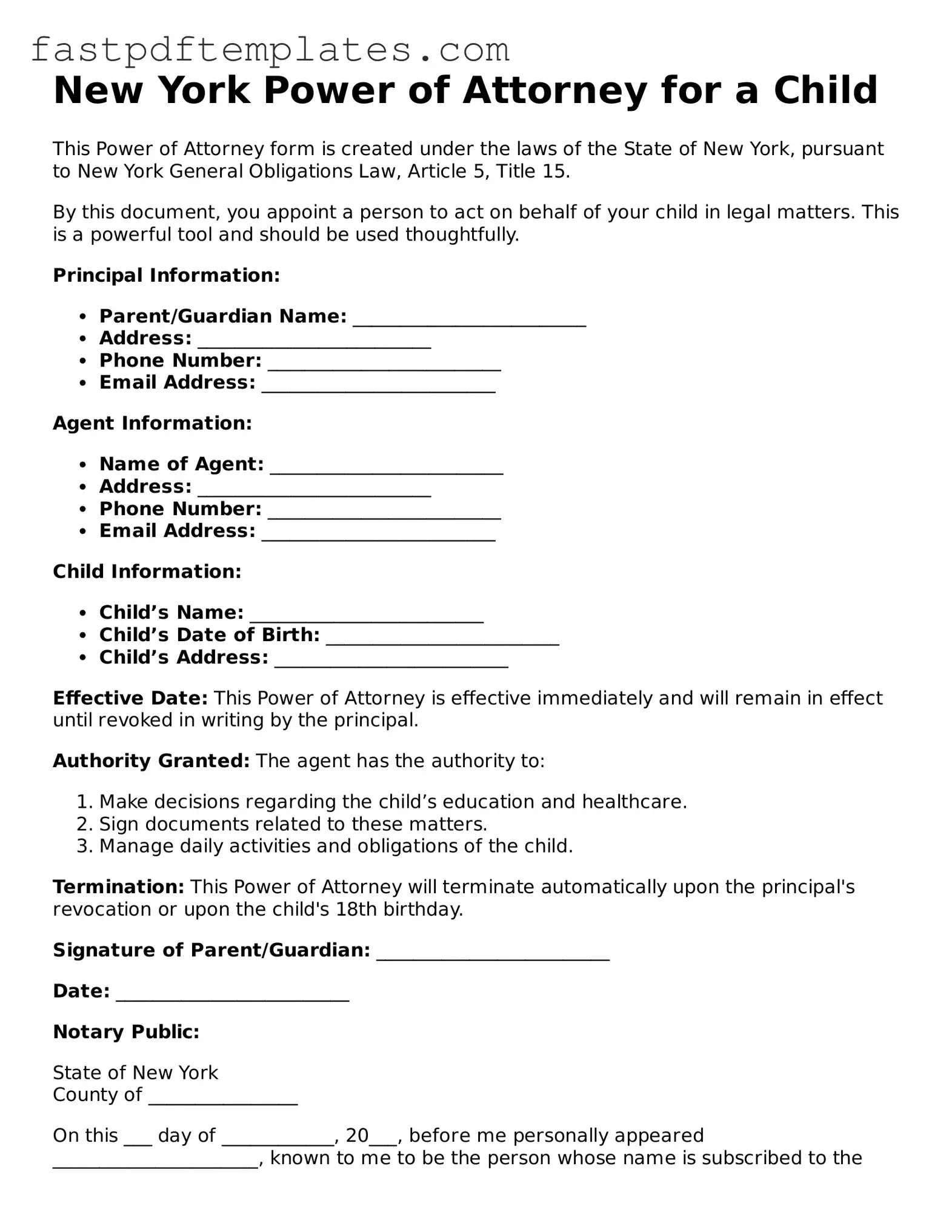The New York Power of Attorney for a Child form is similar to a General Power of Attorney. Both documents allow one person to act on behalf of another in legal matters. However, the General Power of Attorney is broader in scope and can cover financial and business decisions, while the Power of Attorney for a Child specifically focuses on decisions related to the care and custody of a child.
Another similar document is the Medical Power of Attorney. This form grants someone the authority to make medical decisions for another person. Like the Power of Attorney for a Child, it is essential for ensuring that someone you trust can make important decisions if you are unable to do so. However, the Medical Power of Attorney is focused solely on health-related matters.
The Child Custody Agreement shares similarities with the Power of Attorney for a Child. Both documents address the care and custody of a child. However, a Child Custody Agreement is typically used in divorce or separation cases to outline how parents will share responsibilities, while the Power of Attorney for a Child can be used more generally to designate someone to care for a child without needing to establish custody rights.
The Guardianship Agreement is another related document. A Guardianship Agreement appoints someone to take care of a child when the parents are unable to do so. Like the Power of Attorney for a Child, it is designed to ensure that a child is cared for. However, guardianship often involves a more formal court process and can be permanent, whereas the Power of Attorney is usually temporary.
A Standby Guardian Designation is similar in that it allows parents to appoint someone to take care of their child if they become unable to do so. This document provides peace of mind, knowing that there is a plan in place. Unlike the Power of Attorney for a Child, which can be effective immediately, a Standby Guardian typically goes into effect only under specific circumstances, such as the parent's incapacity.
The Consent to Travel form is another document that resembles the Power of Attorney for a Child. This form allows a parent or guardian to give permission for a child to travel with someone else. Both documents ensure that a child is cared for and that their safety is prioritized. However, the Consent to Travel is specifically focused on travel arrangements, while the Power of Attorney for a Child covers broader caregiving responsibilities.
A Child Care Authorization form is also similar. This document allows a parent to authorize another person to take care of their child for a specific period. Both forms aim to ensure that the child is cared for by someone trusted. The key difference is that the Child Care Authorization is often temporary and may only cover specific events or situations.
The Release of Liability form has some similarities as well. This document protects an individual or organization from being held responsible for injuries or damages that may occur while caring for a child. While the Power of Attorney for a Child focuses on granting authority, the Release of Liability is about protecting against potential legal claims during that caregiving period.
The Temporary Guardianship form is another document that can be compared to the Power of Attorney for a Child. Both allow someone to care for a child when parents are unavailable. However, the Temporary Guardianship often requires court approval and is used for longer periods, while the Power of Attorney can be more flexible and is usually easier to set up.
Finally, the Adoption Agreement has similarities in that both documents involve the care and custody of a child. An Adoption Agreement is a legal process that permanently transfers parental rights from one party to another. In contrast, the Power of Attorney for a Child is a temporary arrangement that does not change legal parental rights but allows someone to act on behalf of the parents for specific purposes.
